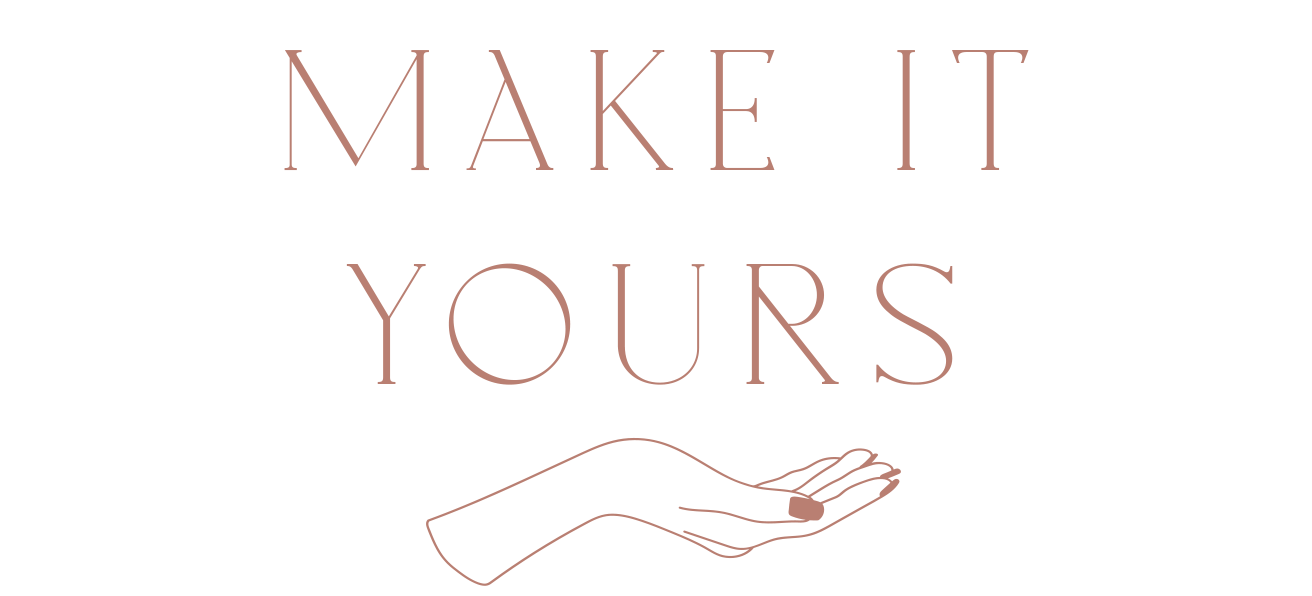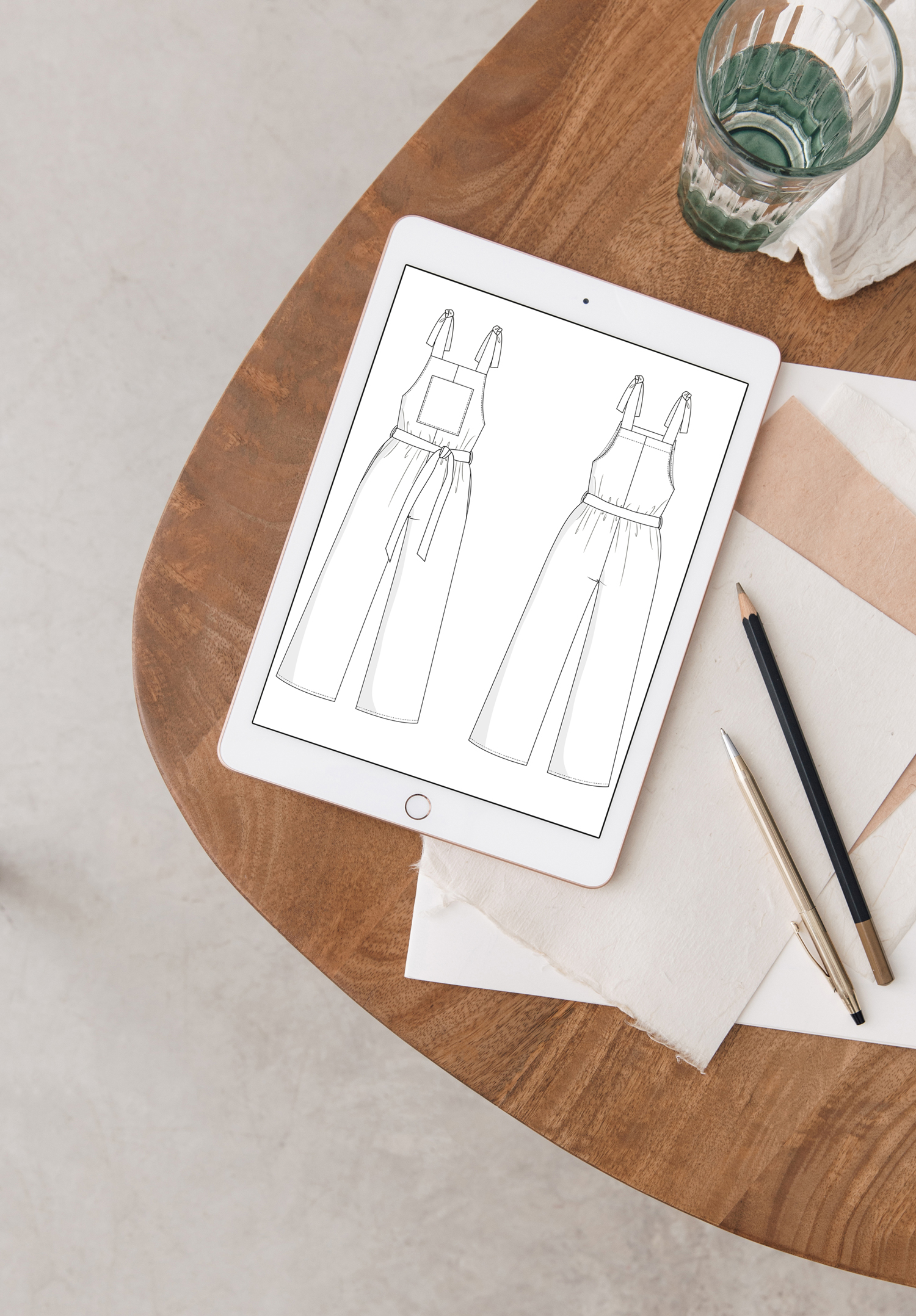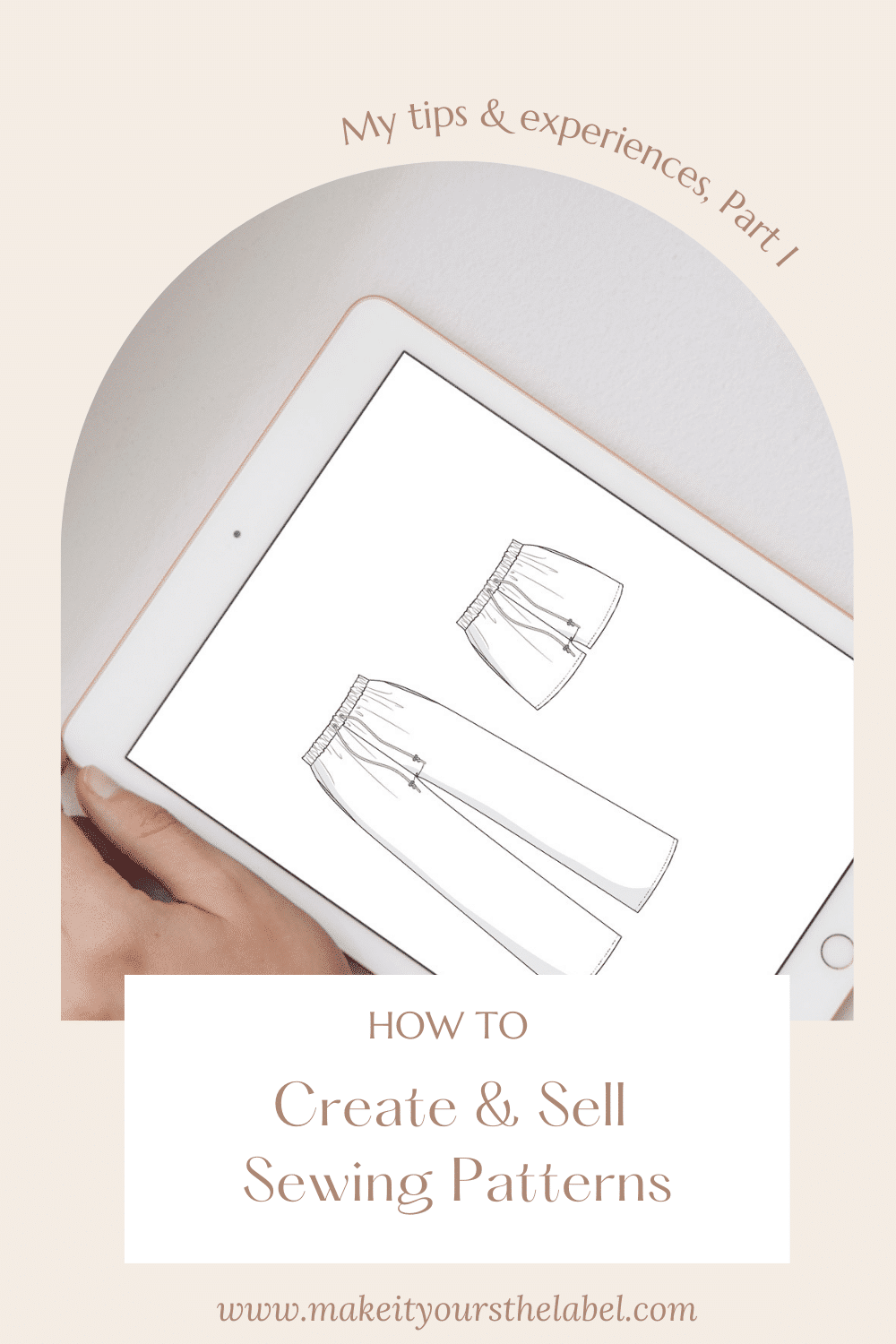Uncategorized
How to make and sell sewing patterns – my tips and experiences, part 1
*This post contains advertising & affiliate links*. This post is translated. Find the original post here.
Creating your own sewing pattern is a dream for many hobby sewists. Maybe you’ve already designed a garment and tested it on yourself. You might even thought about making your pattern available to other hobby sewers and selling it? At this point, you’re probably wondering how to digitize and grade your own sewing pattern.
Do these thoughts sound familiar? Then be sure to read this post with my tips and experiences on creating, grading and selling sewing patterns.
Designing a sewing pattern – that’s how I started:
A few years ago, I faced the same problem. I have been sewing for many, many years and at some point started designing my own garments. It wasn’t until my job at Makerist that I learned to turn my hobby into a business. I am extremely grateful for this and would like to pass this knowledge on to you.
In these and other posts, you will learn step by step how to turn your idea into action. I’ll explain how you can build your own creative business with the “freelance platform Fiverr” and make your first sales with your self-designed sewing patterns.
The topic is very complex, so I’m going to split up my tips and experiences on creating and selling patterns a bit and share them in several blog posts:
- The Basics: how do I create a sewing pattern? From the garment to the flat 2D pattern.
- Materials and costs for creating your own pattern and starting a pattern label incl. specific examples and calculations.
- How to sell your own sewing patterns profitably: helpful tips for your start as a sewing pattern label
I hope I can clear up any questions about designing and selling patterns and starting a pattern label in the following posts. So, let’s get right into some basics.
Where does the inspiration for creating a sewing pattern come from?
Of course, this is very individual, which is why I can only report on my own experience here. Personally, I only make patterns that I need and therefore wear myself. Towards fall / winter I create patterns that I want to wear in the coming fall / winter. Same counts for spring / summer clothes. The inspiration is mostly influenced (whether consciously or unconsciously) by the fashion industry. What the big brands make, what I see in stores and on others: all this, of course, has an influence on my ideas.
Then, as soon as it becomes more specific, I’ll take look at Pinterest for more specific inspiration. I create boards for each garment and think about all the details. In the course of this, I also always do a little “competitor analysis” (I don’t particularly like that term, so it’s in quotes). Basically, what I mean by this is that I look to see who and how many pattern labels offer this or a similar pattern. However, that doesn’t mean I won’t still decide to do it. Because in the end, a shirt is not just a shirt. Each pattern is individual, has its own characteristics and details.
But very important: nobody likes copycats! Be individual, find your personal style and niche 🙂
How are the different sizes of a sewing pattern created?
I always create all my patterns in a sample size first. Mostly this is the size I wear myself, because that way I can also test the cut on myself.
Once I’m happy with a pattern in my test size, I adjust it to the other sizes. This process is called pattern grading.
When grading the pattern, certain values, for example, the length, width, sleeve length, etc. are proportionally adjusted to the next sizes, i.e. graded up and down.
This may sound “not so hard” at first, but believe me: the process is very complex and in any case much more mathematical than you think.
Programs and softwares to create and grade sewing patterns yourself
There are two ways to make sewing patterns: you acquire the necessary knowledge yourself piece by piece through online courses and books, or you get help with the pattern construction.
If you have the time and patience to tackle pattern making yourself, here are a few tips for you:
-
Start with a free pattern program, for example “Inkscape“
Programs for sewing pattern creation are quite expensive.
For absolute beginners, the free software “Inkscape” is therefore recommended. There you can play around, try it out and see if you like it. If you like it, you can grab other programs (or maybe you already have them).
-
Adobe Cloud / Adobe Illustrator for digital pattern making:
If you have Adobe Cloud, you can download Adobe Illustrator. In Illustrator, you can create pattern vector files. However, since the program is not specifically designed for pattern construction, the process remains very manual. So I recommend Adobe Illustrator more for very simple patterns or for bag patterns, because they don’t need to be graded up.
-
A professional pattern program:
For more complex patterns, there are professional pattern design (CAD) programs, such as “Grafis“, which many pattern designers and pattern directors use. However, the program is definitely not recommended for private use, as it is very expensive and complex.
How can you have sewing patterns made and what do you need a pattern director for?
Not everyone has the time and leisure to deal with the creation of patterns, or pattern construction itself. And that’s perfectly fine.
Especially if you are thinking of starting your own pattern label, it is very helpful to outsource processes to specialists. This is how you ensure that your products have the best possible quality and can compete in the market.
But now to the important point: if you can not / do not want to create your pattern yourself – who can help you?
A pattern maker creates, digitizes and grades patterns. On freelance platforms like Fiverr you can find freelance editing directors from all over the world. These are then international, so (probably) not from Germany / Austria / Switzerland, but have for me a very clear advantage: they commonly are from the main locations of the global clothing industry and often have years of experience. What this means for you is that those pattern makers can often quickly understand what exactly you need and the quality is (in my experience) very professional.
Try it out right away! Here you will find many freelance editing technicians that you can contact today:
Conclusion on the basics of sewing pattern creation
- Sewing Patterns are first created in a reference size and then adapted to other sizes. This process is called “pattern grading”.
- You can learn to create patterns yourself, for example with free programs like “Inkscape” or paid programs like “Adobe Illustrator” or “Grafis”.
- Alternatively, you have the option of getting help, for example from freelance editing technicians. You can find them for example on the Freelance Platform “Fiverr”
I hope I gave you a first insight into the world of pattern labels. You already know how patterns are created, which programs you can work with and what a pattern maker is.
In upcoming posts, I’ll explain how to start a pattern label, what costs to expect, and how to sell your patterns for a profit.
Until then, I’m happy to hear your thoughts on this in the comments or on Instagram.







Great info.
I am just looking to create patterns for
My plus size niece. This way she won’t have to wear plus size women’s clothing.
A couple sewing groups have people asking for it. May be a good thing for you .. ? Can you recommend an online class
For basic pattern making ?
She is 11 and no confidence. She had a rough life. Gram (my sister ) has custody.
Hey Diane,
what a great idea to create custom patterns for and with your niece 🙂
I dont have a particular online class in mind to be honest. Personally i work very traditional with books and some youtube videos here and there. Sounds boring but works very well 🙂
All the best,
Maria
I’m a fairy skilled plus size sewist and tbt online pattern programs are the ones making my life better. Just tried out Sewist, what a high!
Hi Maria, thanks for sharing you some tips into where to look for pattern grading and digitalising. I wondered if you were going to continue with your blog on 2. Materials and costs for creating your own pattern and starting a pattern label. It’s so difficult to find any info out about this process so would be wonderful if you could share some tips. Many many thanks, Harriet
Hey Harriet, I am working on part two which will also be available on YouTube (in German tho). Ill def. translate it into English as well. Happy to hear you find it helpful and interesting. That actually really motivates me for the upcoming parts! Make sure to follow me on instagram so you won’t miss out on it 🙂
for about a year I’m making my own patterns with video tutorials I think Imade a great job but I have 0 result on selling them and now I’m a little disapoited
Oh, I understand this can be frustrating. Are you selling on marketplaces? Selling on Etsy or Makerist can be a great way to get visibility. This way people can try out your patterns before they’ll start buying over your website. That’s what I did at the beginning. I also participated at sales for the same reason: people can try out my patterns and might come back to buy more 🙂
I am wanting to make just one pattern and sell it after my show as I make multiple versions of my costume and many ask for the pattern. Do you know who I contact for the actually printing and packaging? everything I find is for a PDF online version and I don’t want that. thanks in advance!.